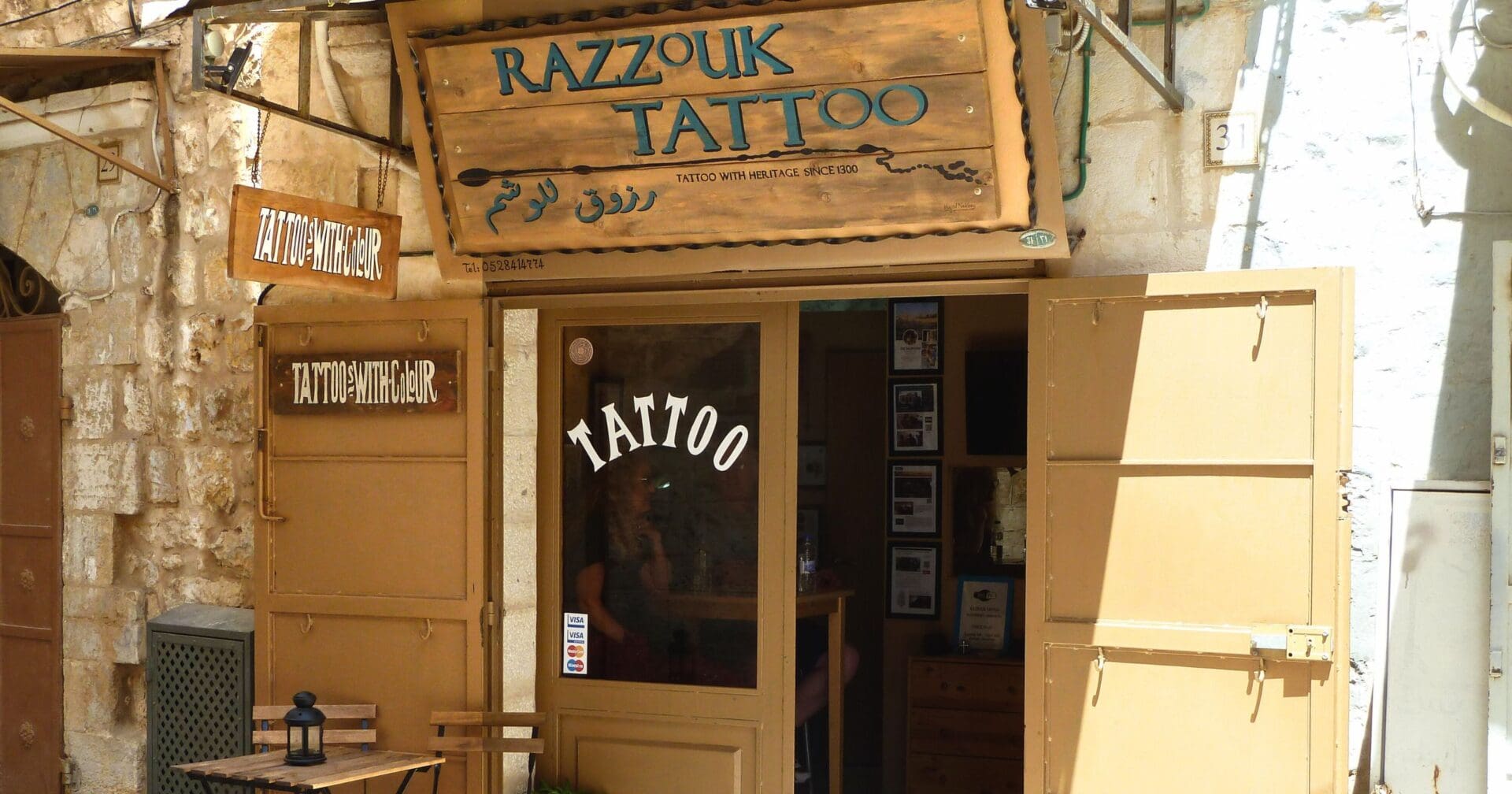Pilgrimage tattoos are an ancient tradition for Christians, stemming back hundreds of years. The tradition stems back to the invasion of Egypt by Muslim armies in the 7th century, where Coptic Christians would be tattooed with a cross on their wrist to identify them to the state. Over time, Copts adopted the tradition by tattooing the cross on themselves voluntarily, serving as a marker for their faith and Christian identity. While the practice has fallen out of popularity, one tattoo shop in Old Jerusalem has been keeping it alive for over 700 years.
Since the crusades, the Razzouk family has been faithfully tattooing Christian pilgrims. Their business began over 700 years ago in 14th century Egypt, however they moved to Jerusalem in the 17th century because of a high demand for skilled tattoo artists. For generations their family have been the go-to for pilgrims looking for a mark of faith to commemorate their holy journeys.

“The tattoo is a symbol of their journey to the Holy Land. It’s a symbol of their identity and it’s something they want to take home as a souvenir, as proof, and as a source of pride of their Christianity and of their pilgrimage to the Holy Land.” – Wassim Razzouk, owner
Their business, “Razzouk Ink,” can be found in a dusty back alley in the Old City of Jerusalem. A sign outside reads “Tattoos With Heritage Since 1300.” Wassim Razzouk, 43, runs the business today, continuing in the footsteps of his now-retired father. Razzouk Ink is so popular with pilgrims, that lines of fifty plus people will wait outside the shop for hours to be inked with traditional designs, such as the Jerusalem cross.
Pilgrims who come to the shop commonly choose a variety of traditional designs from hand-carved olive wood blocks, detailed with intricate images of the Crucifixion, Resurrection, and the Blessed Virgin Mary.
“Those Coptic tattoo blocks are actually considered to be the very beginning of modern-age stenciling techniques. … Lately there has been a lot of demand for using those wooden blocks. Interestingly, more so from Western pilgrims.”
Today, their shop is considered one of the world’s top five destinations for tattooing. Wassim is teaching his son Nizar the family business to continue the century long tradition, and ensure future pilgrims will be able to receive a mark of their journey.
“This is not a tradition and a heritage that is easy to let go of, and I am not going to be the one who is going to stop it or kill it.”
Watch an interview Wassim Razzouk gave with the Times of Israel below:
Photo credit: Utilisateur:Djampa via Wikimedia Commons

















Leviticus 19:29
“Do not cut your bodies for the dead, and do not mark your skin with tattoos. I am the LORD.
Not doing it for the dead. Put yourself under one law you better be under them all.
That was the Old Testament. It is not a sin under the new covenant. Learn your Bibles and God’s word before judging others sinner.
Leviticus also apparently debars Christians for eating shellfish and pork.
Wrong. It debars Jews from eating shellfish and pork. Christians have no dietary restrictions.
The passage from Leviticus is for the priests, the Levites. That passage would need to be present in Deuteronomy to be considered an Old Testament law for everyone.
The passage from Leviticus warns not to mark yourself as a pagan. Nowadays tattoos do not indicate a religious affiliation.
“…for the dead,…” Ya for the dead, there’s a reason there is a comma after the word ‘dead’ and not a period. http://www.sacredink.net/tattoo_and_the_bible/
I’ve been to the Holy Land and one thing I learned when I was there is that the only people with tattoos are Christian. -You see someone with a tattoo there? You know they’re Christian-
The Jews aren’t supposed to mark themselves and the vast majority wouldn’t because of that Leviticus’s law.
But historically Christians would tattoo for a pilgrimage symbol that indeed they’d been to to the holy land and so that if their children were kidnaped by the islam followers the child would see on their wrist they were born Christian. And for a time a cross on the wrist would allow entrance to a church.